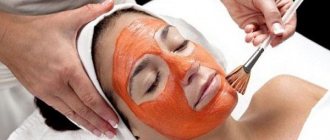Paraffin therapy for feet has a restorative and caring effect. And if hand care is more popular in winter and in the off-season, when they are exposed to the aggressive influence of the external environment, then in the summer - the period of open shoes - the time comes for active care for the skin of the feet. Paraffin therapy quickly and effectively regenerates and moisturizes the skin, helping to give it a healthy appearance in just a few procedures. Let's consider the indications and contraindications for paraffin therapy of the legs, as well as the features of performing the procedure both in the salon by a master and at home.
The essence of the paraffin therapy procedure
Paraffin is a polymer product that is obtained from oil refining. Pure paraffin has a gray-white color and resembles beeswax in structure.
There are two types of paraffin you can buy in pharmacies: cosmetic and medical. The first is used for procedures in salons and at home, and the second is used for heat treatment for colds and rheumatoid diseases in adults and children. Cosmetic procedures for children are contraindicated due to the peculiarities of heat exchange in the extremities.
There are two types of paraffin therapy - cold, without heating the material, and hot, for which paraffin burners are used.
Hot paraffin therapy will be discussed further.
Paraffin therapy: everything you need to know about this useful procedure
The essence of the effect of paraffin during the procedure is to heat the product to 45-55 degrees. It changes from a solid to a liquid state, quickly solidifying as the temperature drops. The feet are immersed several times in heated liquid paraffin to form a multi-layer film, which is then wrapped in polyethylene and a warm terry sock or towel to retain heat and ensure its cosmetic effect.
Under the influence of cosmetic paraffin, the following processes occur in the skin:
- Active hydration;
- Regeneration;
- Removing toxins;
- Elimination of mild joint pain during prolonged heating;
- Improved blood circulation;
- Relieving swelling;
- Increased tissue tone.
Depending on the additives that are present in the paraffin, one or another effect during the procedure can be enhanced. Let's look at the most popular ones.
The essence of paraffin and its properties
The substance in question is a mixture of hydrocarbons. It is obtained through the distillation of oil. This is a clear light distillation fraction and can be further purified. It is also known as Adepsin, Glymol, Saxol and Vaseline.
Such courses are often included in pedicures and manicures at spas and are designed to moisturize, soften and smooth the skin.
Paraffin, unlike candle wax, is soft and melts at lower temperatures (47°C-64°C). The product is used as a preservative to prevent moisture loss and provide a glossy finish.
Physical properties
The substance is an oily, transparent, colorless liquid. At room temperature it is tasteless and odorless. However, when heated, it acquires an unpleasant smell of oil. It is not soluble in water, glycerin or cold ethanol. The density is 0.8 g/cm3.
Medicinal properties
Allows you to get rid of problems with joints, swelling and tumors. It should only be used under medical supervision, otherwise excessive consumption may lead to deficiencies in vitamins E, D, A and K.
Industrial properties
In production, wax crystals are improved by adding to an existing carbon chain. Modification is usually carried out with additives, microcrystalline wax or forms of polyethylene. This results in a wax with higher viscosity, less crystalline structure and greater functionality. Pure paraffin is rarely used for casting metal and other materials because it is relatively soft at room temperature and poses a risk of damage and destruction during operation. For this purpose, cast waxes based on paraffin are used.
Other uses
The substance in question can be used as a non-conductive coolant in electrical systems, hydraulic fluid in various types of machines, lubricant or in the textile industry.
Has the ability to cause hydrocarbon pneumonitis, which occurs when the substance is absorbed into the lungs.
In the laboratory, paraffin wax is used to impregnate thin tissue samples before separating them. Water is removed from the material (75% absolute), and then purification is carried out in an organic solvent - xylene. The fabric is then placed in paraffin wax for several hours, and then set in a mold with wax to cool and harden.
Supplements
Cosmetic paraffin does not differ in composition for hands or feet, and has a whole list of additive components that improve the condition of the skin in general.
A big plus is the ability to independently add oils, vitamins, extracts and serums to the paraffin to enhance the desired effect.
Conventionally, all additives can be divided into categories:
- Oils;
- Vitamins;
- Minerals;
- Active ingredients, serums, concentrates;
- Natural extracts;
- Flavoring additives, artificial and natural.
Action of additives:
- The oils contained in paraffin are responsible for moisturizing, nourishing and regenerating the skin. The skin of the feet requires more intensive nutrition and hydration due to increased stress, so shea butter, tea tree butter, coconut oil, almond oil, and cocoa butter in paraffin are suitable for it.
- Vitamins A and E heal cracks in the feet, actively regenerate the skin and create a protective film on its surface. Pay attention to paraffin, which contains these vitamins, to additionally care for your skin during the procedure.
- Extracts of aloe vera, rose hips, lavender, arnica, chamomile - intensively moisturize and restore the skin. Helps improve the tone of the upper layers and normalizes sweating.
Most often, fruit, citrus and floral additives in paraffin are artificial. You can make a natural composition by adding aromatic oils of rose, lemon, lavender, eucalyptus or tea tree to the melted product. In addition to the benefits for the skin, you will also get an aromatherapy session. Please note that it is necessary to add aromatic oils in a minimum amount, from 3 to 9 drops per bath volume. When adding natural components, the paraffin in the firebox will break down faster.
How to choose paraffin for feet
To do this, we focus on 2 main criteria - the volume required for the procedure and the recommended minimum filling of the bath, as well as the desired effect that we want to get from the additives in it. If you have cases of allergies to cosmetics, it is better to immediately give preference to the pure version.
Paraffin made in Spain and Italy is considered the safest - it has a natural composition and does not cause allergic reactions.
Brands worth paying attention to:
- Depilflax - Spain;
- Depileve - Spain;
- Xanitalia - Italy;
- Beauty Image - Spain;
- GiGi - USA.
Russian-made products of the Aravia brand have proven themselves well. In their lines you can choose paraffin for hot and cold applications.
There is also a special tonic for paraffin therapy. It contains a disinfectant component, urea, and herbal extracts. It is used at the stage of preparing the feet for immersion in paraffin.
One procedure will require 250-400 grams of paraffin, and for a one-time filling of the bath - at least 1500-2500 grams. Based on this, we buy the required volume. Then, as you spend the money, you can buy the required amount.
Review of quality paraffin brands:
Paraffin for hot and cold paraffin therapy - review of the best
Cosmetic paraffin: features
Paraffin is formed during the processing of petroleum products. After purification from organic impurities, you can obtain several types of paraffin:
• technical, familiar to us by its presence in candles; • medical - very well cleaned. Used in physiotherapy; • cosmetic paraffin - very well purified with a large number of useful additives (vitamins, oils, fragrances).
Let's talk separately about active additives - why are they included in the substance? Oils intensively moisturize the skin and smooth out wrinkles. Vitamins promote the renewal of skin cells and also create a protective barrier on it. If you are allergic to any of the components of the composition, then you can use paraffin without any additives at all - even such a “simple” composition will perfectly moisturize your feet by creating a greenhouse effect.
How to choose a bath
Focus on cost, manufacturer reviews and volume. There are small ones - up to 2.5 l, medium ones - 2.5 - 4 l, and large ones - 4 - 5 l. The medium size is the most popular and universal for performing the procedure for both arms and legs.
If you already have a bath at home for paraffin therapy of your hands, and your foot simply doesn’t fit in there, you can melt the wax in it and then apply it with a brush to your feet.
Or pour the liquid contents into a large container and immerse your feet there.
When providing pedicure and paraffin therapy services in a salon, pay attention to models with a timer and temperature maintenance. You can set the heating mode and do other steps, and when the paraffin is ready, set the heating mode and in this state the device will be ready for use all day.
Paraffin bath: choosing a model, operating rules
Types of paraffin
For paraffin therapy, several types of products are used, the common features of which are a high degree of purification from harmful impurities and artificial dyes. Paraffin is classified according to the following characteristics:
- Temperature . The compositions are cold - they are ready for use without preliminary preparation, and hot - before use they are heated to achieve a liquid concentration.
- Availability of additional components . The compositions are pure, without impurities, and with the presence of additional ingredients. In particular, these can be oils, plant extracts, vitamins.
Indications and contraindications
The paraffin therapy procedure for feet is affordable both at home and in the salon. Thanks to this, as well as the quick effect on the skin, it enjoys continued popularity.
Who is the procedure indicated for:
- Paraffin therapy for feet will help with critical conditions of dry skin in the off-season and in the summer while wearing open shoes;
- As an intensive caring SPA procedure during a pedicure in a salon or office. Recommended after performing a trim or hardware pedicure and applying a coating to the nails;
- As a warming up step when performing foot and leg massage;
- For mild rheumatoid conditions, to warm up the joints. It is necessary to increase the heat exposure time and the thickness of the paraffin layer in this case;
- To relieve fatigue and swelling of the skin after a day on your feet.
There are also contraindications, and you should not ignore them. These include the following conditions and symptoms:
- Phlebeurysm;
- Severe allergic reactions on the feet;
- Fungal and other dermatological diseases of the feet and nails;
- Infections and inflammations;
- Open wounds or burns in the active healing phase;
- Hypertension;
- Diabetes;
- Numbness or increased sensitivity in the legs.
Contraindications
Despite the fact that paraffin therapy for feet seems to be a safe procedure that does not cause side effects or complications, there are still contraindications to its implementation and they must be followed strictly. Thus, exposure of this kind is not recommended for:
- Pregnancy.
- Individual intolerance to the products used.
- Diabetes mellitus.
- Violation of skin integrity.
- A large number of moles, warts and other benign formations.
- The presence of ulcers, allergic rashes on the legs, dermatological and fungal diseases.
- High blood pressure.
- Severe pathologies of internal organs (especially the heart and liver).
- Elevated body temperature and inflammatory processes.
Recommended intensity
How often can and should you do paraffin therapy for your feet? In emergency cases, when you need to quickly restore, moisturize and nourish the skin of your feet, you can do 3 procedures per week.
The recommended average intensity is a course of 3-10 procedures over 1-2 months with an intensity of first 2 and then 1 procedure per week.
To maintain well-groomed condition of the skin of the legs, 2-3 procedures per month are enough. They may coincide with a pedicure procedure when you visit a salon. Between pedicure procedures and paraffin therapy of the feet, systematic home care for the skin of the feet should be carried out using creams and nourishing masks, especially during periods of increased stress on the feet.
The benefits of paraffin foot baths
One of the main problems of the skin of the feet is excessive dryness. You can fight it only with intensive moisturizing. Paraffin will help with this. By itself, it does not have moisturizing properties, but if you apply a moisturizer underneath it, the effect will be amazing.
Hot paraffin will help create a kind of “sauna” for your feet. Blood circulation in the feet will improve, the pores will expand, as a result, toxic substances will be released through sweat, and the beneficial moisturizing components from the cream, on the contrary, will quickly be absorbed into the skin, making it soft and smooth.
Of course, one procedure to get rid of dry calluses and soften severely rough skin will not be enough. To obtain the expected effect, you will have to perform from 8 to 12 procedures. Considering that the break between them should be a week, the course will last from two to three months.
Paraffin foot baths at home
Materials for the procedure in the salon
If you are performing the procedure at home for yourself or for clients who have had pedicures, vary the list accordingly. A basic set for paraffin therapy of the feet, which the specialist will need in the salon:
- Disposable gloves;
- Hand sanitizer and foot sanitizer;
- Paraffin bath for the procedure;
- Plastic bags for feet;
- Terry socks or felt boots (can be replaced with a terry towel);
- Brush for working hard-to-reach areas;
- Medium grind scrub;
- Acid scrub or keratolytic;
- Coconut oil or nourishing cream;
- Paraffin in briquettes per procedure.
Paraffin therapy kit: what a master needs for the procedure
Coconut oil can be replaced with cocoa or olive oil. It will be required for application to the skin before immersion in paraffin. For dry skin on the feet and small cracks, you can additionally use Panthenol, applying it before applying the oil. You can also use sea buckthorn oil for small cracks; it has a pronounced healing effect.
How to do paraffin therapy correctly?
This procedure can be carried out at home, but to obtain an effective result, a number of conditions must be met:
- Before the session, apply a cream that does not cause allergic reactions to your skin.
- For this procedure, you can only use special cosmetic paraffin, which when melted does not burn your hands and does not contain harmful components.
- The session is best carried out on special devices equipped with thermostats and temperature indicators.
Attention! Immediately after the session, you should not go out into the cold air, because temperature changes reduce the positive effect.
If you contact the specialists of the OK! Beauty Center, you will save yourself from the need to look for suitable consumables - cosmetic paraffin, gloves, creams, select dishes, and then wash them. Our cosmetologists will carry out the procedure in full compliance with all safety rules; the likelihood of errors due to the unprofessionalism of the masters is completely excluded. We use cosmetic paraffin enriched with plant components and fragrances that enhance the effect of the procedure. The specialist will select the supplements that are most suitable for each visitor.
Step-by-step instruction
Place all materials and cosmetics for paraffin therapy in a separate box so that it is at hand at the right time. Paraffin therapy for feet is recommended after completing a pedicure for additional skin care. It takes about 30-60 minutes, taking into account all the manipulations, so plan your time in advance.
Let's take a step-by-step look at how to perform paraffin therapy on feet on a client in a salon or on a specialist at home:
- Treat your hands with antiseptic and put on gloves;
- Put the bath in the heating mode and place the required amount of paraffin into it;
- Treat the client's feet with disinfectant;
- If a pedicure was not performed before the procedure, at this stage it is necessary to treat the feet with a keratolytic and remove dead skin with a grater while it is damp. If the feet are in good condition, a thorough scrub will be enough;
- Remove the remaining keratolytic or scrub with a damp cloth and dry the skin;
- Apply nourishing cream. An alternative is coconut, almond, shea or cocoa butter. We distribute it evenly along the entire perimeter of the feet so that it has a nourishing, moisturizing and protective effect;
- Place a protective net on the bottom of the bath;
- Immerse the foot in heated liquid paraffin for 2-3 seconds three to five times;
- Each time we take it out, wait for it to harden, and repeat the immersion again. It is necessary that the film of the product reaches a thickness of 2-5 mm. Hard-to-reach areas between the fingers can be additionally treated with a brush;
- After the required number of dives, we immediately place the foot in a plastic bag and then in a terry sock. We make sure that the client does not move his fingers intensively so that the film does not crack;
- We time it for 15-30 minutes, and then remove the paraffin along with the bag and dispose of it;
- We wipe our feet with a damp and then a dry cloth to remove any remaining product and decay products that have come out of the skin under the influence of heat;
- We apply a light nourishing cream in winter and a mild moisturizer in summer.
- At the final stage of applying the cream, you can do a light foot massage.
The price of paraffin therapy for feet varies from 400 to 1500 rubles depending on the salon, region, paraffin used and accompanying cosmetics.
The presence of a paraffin therapy procedure in the list of services of a master or salon immediately increases the rating of the establishment or the name of the specialist, and makes it possible to receive additional income.
You also have the opportunity to offer the service of intensive restoration and moisturizing of the skin of the feet to those clients who need it according to indications, or who want to improve the quality of self-care. To the main page about paraffin therapy >> Comment
Paraffin for baby's feet at home
Today, paraffin therapy (treatment using paraffin) is actively prescribed by orthopedic doctors who are adherents of traditional medicine, but do not reject popular recommendations. We will tell you how to make paraffin for a child’s feet in this article.
In the most ordinary pharmacy, buy paraffin and ozokerite (auxiliary component) at a ratio of 2 to 1. Melt both components in a water bath. Cover a baking tray from the stove with a thick plastic bag. The resulting liquid should be poured here. For one leg, you should make two blanks for the boot. The temperature of the finished composition should be hot, but not scalding (about 40° C).
Apply the slightly frozen but soft mass in polyethylene to the child’s leg and wrap it. You should start with your calves, and then slowly and carefully work your way down your leg. Now wrap the entire limb with cling film or foil. Put on a warm sock (golf or leg warmers) on top. Cover the baby with a blanket.
Do all actions slowly and very carefully. The paraffin compress should initially last 20 minutes. Then every day you can increase its duration by 5 minutes. The maximum time of a paraffin-based compress for a child, regardless of age, can reach 50 minutes.











